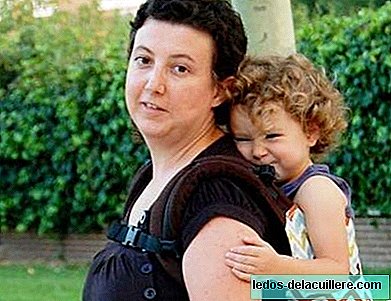
We are in the wintry season, in full swing of coughs, mucus and fevers, a time when children also begin to suffer more infections that are also accompanied by fever.
Fever, as we have said on other occasions, is not a disease to be medicated, but a symptom that must be taken into account just in case. It is a defense and fight mechanism of the body against infections, basically because viruses and high temperatures don't get along too wellThat is to say, the higher the temperature, the more the body is fighting the virus and the more likely it is to win.
The problem is that if the fever is very high, or if it rises too fast (this must also be controlled), a febrile seizure can occur, which is benign but usually frightens parents (logical). Therefore, when the child is not well with fever, it is recommended to give them something, being the most used drugs paracetamol and ibuprofen (better known as Apiretal and Dalsy).
What happens is that children do not always weigh the same, because they grow and get fat, and we always have the doubt of how much ibuprofen and how much paracetamol our child has to take.
Perhaps it has been a couple of months (or more) since the last time you gave him and then you think that you will surely give him little, because then he weighed less, but you don't usually dare to give more, because “let's see if I'm going to happen". It is for this reason that today I am going to explain to you how to calculate the dose of paracetamol and ibuprofen that is up to each child based on their weight (calm all, it can be done mentally).
How much paracetamol a child has to take, depending on his weight
I speak first of paracetamol because it is, of the two, the one with the least side effects and the one used above all in babies and young children.
The Recommended daily dose of paracetamol is approximately 60 mg / kg / day, to be distributed in 3 or 4 shots (three if given every 8 hours and four if given every 6 hours). In the leaflet they say that it can be given even every 4 hours, but it is not usually done.
If we are going to give our child paracetamol every 6 hours, the dose is equivalent to 15 mg / kg in each dose. If we were to give them every 8 hours, it would be 20 mg / kg per dose, however it is often said (so try to medicate children as little as possible), given 15 mg / kg every 6-8 hours.
Given that the paracetamol in syrup comes in a concentration of 100 mg / 1 ml, a 10 kg child will have to give 1.5 ml of paracetamol every 6-8 hours.
From here we can create a mental rule easily: child's weight plus half the child's weight divided by ten. If my child weighs 8 kg, I add half his weight (4 kg) and he gives me 12 kg. I divide this by ten and so I will know how much to give in each shot: 1.2 ml every 6-8 hours.
Another example: my son weighs 14 kg. I add half of its weight to its 14 kg, which is 7 kg and gives me 21 kg. I divide it by 10 and get the 2.1 ml that touch every 6-8 hours.
How much ibuprofen a child has to take, depending on his weight
Ibuprofen can be given to babies from 3 months (seriously, that puts it in the leaflet), but Normally recommended from 6-12 months (At least in my center we do it this way), because he is not too friendly with the renal system and babies do not usually have too mature kidneys until they are at least 12 months old.
In addition, it is always recommended that before giving ibuprofen children have eaten something, to protect the stomach a little.
Ibuprofen is usually given in 3 doses, that is, every 8 hours. The amount of ibuprofen that corresponds to each person is calculated knowing that the recommended amount is 20 mg / kg per day, or what is the same: 6.66 mg / kg per dose.
Calculating the amount of ibuprofen based on this is very simple, although it may seem very complicated. It's simple because 2% syrup (usually 2%, but there are brands like Junifen or Apirofen that also come 4%) contains 20 mg of ibuprofen for every ml of syrup (20 mg / 1 ml). That is, as they correspond to 20 mg / kg per day, in 2% syrup the rule is 1 ml / kg per day.
If my child weighs 10 kg the only thing I have to do to know how much ibuprofen has to take in a day is to multiply 10 kg by 1 ml, which results in 10 ml. That is, it is not necessary to multiply anything, because my child's weight will always be the amount in ml that he has to take that day (if he weighs 18 kg, he has to take 18 ml a day).
The only calculation we have to do then is to divide the total amount of the day between the 3 times it will be taken (every 8 hours is 3 times a day). I mean, that to know how much ibuprofen you have to give your child you just have to divide his weight by three. Thus, if your child weighs 10 kilos, he would have to take 3.3 ml every 8 hours. If it weighs 15 kg, then 5 ml every 8 hours.
Easy, right? Well, hala, one less thing to ask the pediatrician at the next visit.












